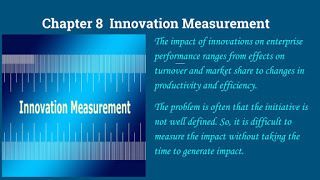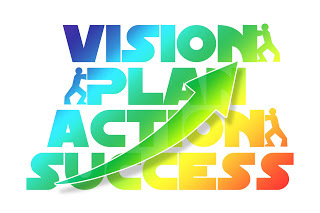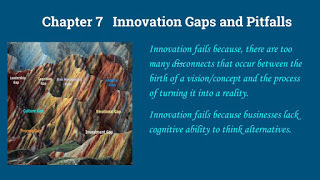Pearl Zhu's Blog, page 1272
December 2, 2016
The New Book “Unpuzzling Innovation” Quote Collection I
 Digital is the age of innovation. And innovation is what leads to differentiation. There are many ways to differentiate and, therefore, there are many ways to pursue innovation. The purpose of “Unpuzzling Innovation - Mastering Innovation Management in a Structural Way“ is to demystify innovation puzzle in a structural way. Innovation is the process which can be classified scientifically and managed dynamically. Innovation is neither serendipity nor status quo, it needs to break some outdated rules, builds digital principles, and takes a systematic approach with robust, but not overly rigid processes to implement it. Digital innovators are the “whole-brainers” who present leadership skills and multidimensional intelligence, to mastering the “art of possible.” Creativity is simply about connecting the dots, the difference between innovation and creativity is implementation. It’s important to develop a set of best/next practices to manage digital innovation continuum effectively. It’s also critical to understand the paradox of innovation and strike the right balance between ideation and execution part of the innovation process and management. Innovation journey is thorny, be cautious about gaps and pitfalls on the way, to improve innovation success rate and measure it in the right way.
Digital is the age of innovation. And innovation is what leads to differentiation. There are many ways to differentiate and, therefore, there are many ways to pursue innovation. The purpose of “Unpuzzling Innovation - Mastering Innovation Management in a Structural Way“ is to demystify innovation puzzle in a structural way. Innovation is the process which can be classified scientifically and managed dynamically. Innovation is neither serendipity nor status quo, it needs to break some outdated rules, builds digital principles, and takes a systematic approach with robust, but not overly rigid processes to implement it. Digital innovators are the “whole-brainers” who present leadership skills and multidimensional intelligence, to mastering the “art of possible.” Creativity is simply about connecting the dots, the difference between innovation and creativity is implementation. It’s important to develop a set of best/next practices to manage digital innovation continuum effectively. It’s also critical to understand the paradox of innovation and strike the right balance between ideation and execution part of the innovation process and management. Innovation journey is thorny, be cautious about gaps and pitfalls on the way, to improve innovation success rate and measure it in the right way.1 Digital innovation is a dynamic storybook that has intricate chapters, with a serendipitous cover, which can be flipped over to the next level, but it is a book that never ends.2 The innovation classification is not just based on the required investments, or on the potential market, but on its evolution abilities.3 Innovation is a question of ambition, and imagination, not a question of investment only.Innovation means something new and valuable. Innovation is relative and has a context.4 You cannot “disrupt” without incremental innovation being part of the process.5 The very nature of open innovation is to take advantage of all sources of creativity in a more open way and make a leap of innovation management to the next level.6 The mindset, vision, competency, capability, culture and marketing opportunity are all great starting point for business model innovation.7 The design does need more recognition as thinking and problem-solving process, maybe even a strategic differentiator.8. Management innovation has both hard elements such as process and metrics; and soft elements such as communication and culture.9 Hire mindset, build capability, and harness creativity. 10 The best way to foster creativity is to help people communicate in a way that instills confidence, not fear.11The exercise of blending people’s problem-solving abilities to produce the desired outcome is a worthwhile thing to do.12 An innovation ecosystem is a systematic innovation methodological environment or a sort of innovation philosophy.13 Being innovative is more important than any specific innovation. Innovativeness is a way of thinking.14 Businesses need the well-defined set of guidelines and rules for managing innovation risks in a structural way.15 Build a heterogeneous team to close three gaps in innovation management - idea gaps, collaboration gaps, and implementation gaps.16 Creativity is an inherent ability that cannot be taught, only developed.17 Innovation comes from the Latin, “Innovare” - It means to change or alter things that already exist.18 Create and nurture an environment in your organization where curiosity is encouraged, and creative thinking is rewarded.19 The solution to encourage creativity is to maximize use of employees’ brainpower.20 You can feel creative tension when you sense the freedom to be creative, the harmony not via compliance only, but through brainstorming. 21 Always dig through the thoughts underneath the words, and be authentic of being who you are.
 22 Creativity is a flow, an abstract and an imagination.23 Innovators find more viewing spots than the rest. 24 Creativity is a high level of thinking and intelligence. 25 An innovator has an obligation to her vision, to be authentic and to think strategically.26 Yo cannot make omelets without breaking some eggs. You cannot be truly innovative without breaking some outdated rules. 27 Innovative leaders today are digital conductors, problem-solvers, and culture influencers. 28 Innovative thinkers are explorers and synthesizers of new world views or future views of the world. 29 Creative leadership can be described as “Adaptability meets agility,” and “Innovation meets Principles. “30 Innovation journey is like taking a hiking trip at the trail very few or even no people ever went before, it takes courage and emotional maturity. 31 Innovation is to connect the dots - synthesizing that goes in one mind, and teamwork through collective insight. 32 It takes an innovative adventure to grow one from good to great.33 Innovators think differently via nonlinear or different angles.
22 Creativity is a flow, an abstract and an imagination.23 Innovators find more viewing spots than the rest. 24 Creativity is a high level of thinking and intelligence. 25 An innovator has an obligation to her vision, to be authentic and to think strategically.26 Yo cannot make omelets without breaking some eggs. You cannot be truly innovative without breaking some outdated rules. 27 Innovative leaders today are digital conductors, problem-solvers, and culture influencers. 28 Innovative thinkers are explorers and synthesizers of new world views or future views of the world. 29 Creative leadership can be described as “Adaptability meets agility,” and “Innovation meets Principles. “30 Innovation journey is like taking a hiking trip at the trail very few or even no people ever went before, it takes courage and emotional maturity. 31 Innovation is to connect the dots - synthesizing that goes in one mind, and teamwork through collective insight. 32 It takes an innovative adventure to grow one from good to great.33 Innovators think differently via nonlinear or different angles. Follow us at: @Pearl_Zhu
Published on December 02, 2016 23:21
IT Performance Measurement Pitfalls
 Today’s IT organization intends to become the business’s growth engine, rather than just a maintenance back-office, the problem is that the IT folks tend to see IT value in things that aren't as important to the business. Performance Indicators for IT need to be defined in keeping the view of the corporate objectives and put into a mix of other performance measures. More specifically, what are IT performance measurement pitfalls, and how to avoid them?
Today’s IT organization intends to become the business’s growth engine, rather than just a maintenance back-office, the problem is that the IT folks tend to see IT value in things that aren't as important to the business. Performance Indicators for IT need to be defined in keeping the view of the corporate objectives and put into a mix of other performance measures. More specifically, what are IT performance measurement pitfalls, and how to avoid them?Only measure the part of the story from finance perspective: Keep in mind performance measures are stories, not just data. Historically, performance measurement systems for most businesses have been financing driven. However, in many business situations, financial indicators only cover part of the story. IT must contribute or facilitate and accelerate organizational performance, not just IT efficiency, your measures should cover all areas that contribute to value creation including service quality, employee engagement, customer satisfaction and financial outcomes. IT needs to measure performance from a customer perspective. How IT manage customer and vendor relationship has become the key to delivering the right solution at the right time. The efficiency and effectiveness of the end user are crucial in this, it includes the enhanced communication with business customers, iterative interaction with end users, and strategic relationship with vendors. The set of questions or measurement such as:--Does IT create a revenue opportunity?--Does IT create competitive advantage?--Does IT solve a business need or meet customers’ expectation?--Is IT priority and business priority consistent?--Does IT help to attract new customers or retain current customers?
Assume the collective IT performance is equal to the sum of pieces - individual’s performance, which is not always the case: There’re always two sides of measurement. The measures to motivate teams to achieve more and the measures to distract management from the ultimate business goals. The performance measure setting should focus on achieving the ultimate goals of business as a whole, not just the individual or the team’s performance. Performance management, when used in an individual context, tends to focus on all that is good that has been achieved by the individual. it is rare that an individual emphasizes what they haven't achieved. When the managers changed the focus of the organization after poor company results, they asked people to explain why if the overall performance was so good, was the company failing? Top executives asked the managers to start explaining what they had not achieved and why? Because often PEOPLE DO WHAT YOU INSPECT, NOT WHAT YOU EXPECT! Don’t just scratch the surface to manage the numbers. Always understand the business as the whole is superior to the sum of pieces, so the measurement and incentive should serve the ultimate business goals. Celebrating success is important, but understanding what’s blocking overall business achievements, targets and performance is paramount.
 Wrong selection of key performance setting could get the devastating effect to the business: Evaluate the potential risks from performance measurement setting. The most dangerous part is when performance system is connected with motivation system on an operational level, but disconnected from the strategy management. The one way to find out that the performance measurement setting is ineffective is by looking at the behavior and culture the KPI is driving. If behavior and culture are off, and politics is becoming more and more dominant, then you know that performance indicators are perhaps just not the right one. IT performance management dashboard usually includes: (1) Well selected metrics and performance measure data(2) IT Departmental P & L(3) Employee Turnover/ Attrition percentage(4) Key challenges and relevant data(5) Top accomplishments for strategy execution
Wrong selection of key performance setting could get the devastating effect to the business: Evaluate the potential risks from performance measurement setting. The most dangerous part is when performance system is connected with motivation system on an operational level, but disconnected from the strategy management. The one way to find out that the performance measurement setting is ineffective is by looking at the behavior and culture the KPI is driving. If behavior and culture are off, and politics is becoming more and more dominant, then you know that performance indicators are perhaps just not the right one. IT performance management dashboard usually includes: (1) Well selected metrics and performance measure data(2) IT Departmental P & L(3) Employee Turnover/ Attrition percentage(4) Key challenges and relevant data(5) Top accomplishments for strategy executionYour measures should cover all areas that contribute to the business success. Hence, don’t just play the number game, but connect the contextual dots to focus on the overall business objectives. Ensure that IT performance measures are both qualitative and quantitative, and implement whatever mechanisms you need to be able to gather the data. Even if you choose the right KPIs, you must change them from time to time accordingly. Otherwise, your business is going to be driven by that specific set of KPIs: you are going to focus on them only, but ignoring the bigger picture of the dynamic business reality. Always attempt to identify areas in which measurable improvements can be realized, providing demonstrable value is essential, in some instances, these areas have been low-hanging fruit.
Follow us at: @Pearl_Zhu
Published on December 02, 2016 23:18
December 1, 2016
The Weekly Insight of the “Future of CIO” 12/1/ 2016
 The “Future of CIO” Blog has reached 1.5 million page views with 3300+ blog posting in 59+ different categories of leadership, management, strategy, digitalization, change/talent, etc. The content richness is not for its own sake, but to convey the vision and share the wisdom. Here is the weekly insight about digital leadership, IT Management, and Talent Management.
The “Future of CIO” Blog has reached 1.5 million page views with 3300+ blog posting in 59+ different categories of leadership, management, strategy, digitalization, change/talent, etc. The content richness is not for its own sake, but to convey the vision and share the wisdom. Here is the weekly insight about digital leadership, IT Management, and Talent Management.The Weekly Insight of the “Future of CIO” 12/1/2016The New Book "Unpuzzling Innovation" Conclusion Slideshare: Digital is the age of innovation. And innovation is what leads to differentiation. There are many ways to differentiate and, therefore, there are many ways to pursue innovation. Talking of innovation is not new nowadays, everybody, every organization now is talking about innovation. It's been at or near the top of the business or economics agenda for a long time. However, there’re a lot of confusions about innovation and there is no magic sauce to guarantee its success. One of the good definitions of innovation is: "to transform the novel ideas into commercial success.” In essence, innovation is, "intentional novelty bringing sustainable benefit."
Refining IT Role as the Digital Business Value Creator: IT continues to grow in importance to organizations, both operationally and as a competitive advantage. With emerging digital opportunities and risks, business leaders, including IT leaders are once again seeing the benefit of running IT as a business inside the business, that's the way to go. IT also needs to clearly define its role as a value creator for business, to enable growth and catalyze innovation.
 The Popular Quotes Collection II of “Digital Master” Book Series “Digital Master” is the series of guidebooks (11+ books) with five pillars to perceive the multifaceted impact digital is making to the business and our society, help forward-thinking organizations navigate through the digital journey in a systematic way, and avoid “rogue digital.” Here is the set of popular quotes for conveying the digital vision and sharing the unique insight about the digital transformation.
The Popular Quotes Collection II of “Digital Master” Book Series “Digital Master” is the series of guidebooks (11+ books) with five pillars to perceive the multifaceted impact digital is making to the business and our society, help forward-thinking organizations navigate through the digital journey in a systematic way, and avoid “rogue digital.” Here is the set of popular quotes for conveying the digital vision and sharing the unique insight about the digital transformation.The Monthly Foresight: The Hybrid Nature of Digital Organization Nov. 2016 We live in the world with both “old” and “new,” embracing digital is inevitable as that it is now part of reality. The latest enterprise digital computing technologies enable seamless virtual platforms, enhance physical organizational structures, empower workforce sharing the thoughts and ideas, engage customers and partners to voice concerns and feedbacks, and encourage the broader conversation and interaction within its business ecosystem. Digital organization has a hybrid nature with flexibility, agility, and innovativeness.
Three Aspects in Running Digital Ready IT: Forward-looking organizations large and small are on the journey of digital transformation. The word "transformation" in itself means change and change for the better, with new ways and methods of doing things, new structures, new relationships etc. There are changes in two shapes in IT digital transformation: One is internal where IT transforms itself to become faster and more effective, and the second is where IT helps transform or change the entire business in line with new strategic imperatives. Here are three aspects of running digital ready IT organization:
Blogging is not about writing, but about thinking and innovating the new ideas; it’s not just about WHAT to say, but about WHY to say, and HOW to say it. It reflects the color and shade of your thought patterns, and it indicates the peaks and curves of your thinking waves. Unlike pure entertainment, quality and professional content takes time for digesting, contemplation and engaging, and therefore, it takes the time to attract the "hungry minds" and the "deep souls." It’s the journey to amplify diverse voices and deepen digital footprints, and it's the way to harness your innovative spirit.
Follow us at: @Pearl_Zhu
Published on December 01, 2016 23:07
The New Book “Unpuzzling Innovation” Conclusion: Mastering Innovation in a Structural Way
 Innovation is about future, without it, you lose sight of tomorrow. Innovation is an exceptional, exclusive, and realistic idea that separates you from others without a second thought. Innovation is about growth, it captures the essential element of any business and quality within every leader. When innovation outside your organization outraces innovation inside your organization, it is time to address factors influencing business velocity, performance, profitability and customer preference. Look to and listen to your data, use it to help you drive innovation. Innovation becomes simply “creating value by solving simple or complex problems.” The importance of innovation has increased as the business has the pressure to get more and better innovation. And high-innovative organizations can fine-tune innovation management as a differentiated business capability and master innovation in a structural way.
Innovation is about future, without it, you lose sight of tomorrow. Innovation is an exceptional, exclusive, and realistic idea that separates you from others without a second thought. Innovation is about growth, it captures the essential element of any business and quality within every leader. When innovation outside your organization outraces innovation inside your organization, it is time to address factors influencing business velocity, performance, profitability and customer preference. Look to and listen to your data, use it to help you drive innovation. Innovation becomes simply “creating value by solving simple or complex problems.” The importance of innovation has increased as the business has the pressure to get more and better innovation. And high-innovative organizations can fine-tune innovation management as a differentiated business capability and master innovation in a structural way.Innovation = ideas executed to produce a value: More generally, innovation is about creating value from ideas. More specifically, innovation shouldn’t be serendipity, “Systematic Innovation” is an appropriately structured framework and a set of practical tools anyone can use to create or improve products, processes, and services that will deliver new value to customers. Making innovation happen is not hard, indeed too much nonsense it talked about this. But internal communication and management disciplines which we discussed in this book are key enablers to master innovation in a structural way.
No failures, no innovation, but you have to failover and fail forward: Innovation by its inherent nature comes with a risk. The failure is of crucial importance in the process of achieving innovation. However, majority of organizations are not fertile ground for ideation, because they fear taking risks, and seldom learn from their mistakes; their internal politics and fears discourage creative people and downgrade creative projects by means of senseless KPIs, while they push down the innovation funnel, and they forget brand dilution, customer and consumer relevance. Hence, the best judgment, a qualitative approach is given for risk and innovation. Learn from failures, these lessons will increase the effectiveness of your innovation management.
 Innovation must be part of the organization’s DNA - culture: Innovation will happen when people are given free space to be creative without poor leadership or rigid structure to hold them back. Good managers are not always great innovation leaders. The overriding mindset in many organizations is to discourage new ideas. Leaders and managers must diffuse innovation through the organization and include everyone in crafting the innovation strategy, and empower innovators to catalyze the culture of creativity. True innovation and sustainability go hand in hand.
Innovation must be part of the organization’s DNA - culture: Innovation will happen when people are given free space to be creative without poor leadership or rigid structure to hold them back. Good managers are not always great innovation leaders. The overriding mindset in many organizations is to discourage new ideas. Leaders and managers must diffuse innovation through the organization and include everyone in crafting the innovation strategy, and empower innovators to catalyze the culture of creativity. True innovation and sustainability go hand in hand. Innovation is expedited to adapt to the increasing speed of changes. The speed of change is expedited, so does the speed of innovation. Today innovation can happen anywhere and anytime. It expands both horizontally and vertically. It’s the state of mind to think and do things from a new angle, and it’s the business’s unique capability to gain a competitive advantage.
Follow us at: @Pearl_Zhu
Published on December 01, 2016 23:02
IT Transformation is on the Horizon when It is Designed to Change
 Digital means flow - data flow, information flow, and mind flow. Digital organizations have to adapt to the continuous changes and business dynamic in striving as digital masters. Digital transformation is a natural process and rather effortless to maintain, The bottom line is how well the organization is being influenced by varying business factors such as communication, structure, management methodology or approach. IT transformation is an integrated part of the digital transformation of the business. IT transformation is on the horizon when it is designed to change.
Digital means flow - data flow, information flow, and mind flow. Digital organizations have to adapt to the continuous changes and business dynamic in striving as digital masters. Digital transformation is a natural process and rather effortless to maintain, The bottom line is how well the organization is being influenced by varying business factors such as communication, structure, management methodology or approach. IT transformation is an integrated part of the digital transformation of the business. IT transformation is on the horizon when it is designed to change. IT Transformation is on the horizon when you can change the mentality, and that is not easy: Forward-looking organizations empower IT to drive digital transformation. Because IT is in a unique position to oversee underlying business processes and weave all hard and soft elements to orchestrate digital transformation. Any change starts at the mentality level. Taking a couple of change initiatives is an easy part, the difficult part is to understand the psychology behind changes. What needs to worry is the danger of a company adopting a couple of simple rules without doing the difficult work to change the mentality. It might even have an adverse effect on feeding cynicism in the company. Because such an approach won't have any favorable and sustaining effect. Change can only be sustained when the collective mind is shifting from mindset to mind flow, engage all employees in improving their processes, and create the expectation that positive behaviors and mutual respect are valued above everything else. The organization has to be open to innovation and rules can't change that. Rules alone will not allow innovation to be productive. Organization structure and its impact on efficiency and innovation could play either positive or negative impact. The right structure is one that allows the right mentality and culture to bloom.
IT Transformation is on the horizon when IT is integrated into the business with high maturity: The digital paradigm shift means IT is transforming from being a reactive, engine room culture to one that is agile and develops the capabilities to drive business growth and perpetual improvement. IT continues to reach a higher level of maturity. CIOs should build a very collaborative relationship with all peer CxOs because IT is a value-added solutionary to the entire company. For any business unit to be successful they need to partner with IT, IT not only needs to optimize its own structure but also helps the organization tune the digital organizational structure & design, in order to bridge the gaps between IT and business, to integrate IT into the business and improve overall business maturity. More specifically, the digital transformation effort includes things like portfolio rationalization, enterprise roadmaps, operational reliability metrics / dashboard and human capital management strategy, etc.
 IT Transformation is on the horizon when cross-functional collaboration and continuous improvement are the new normal: The enterprise consists of an amalgam of socio-systems, techno-systems, bio-systems, and Econo-systems. A transformation needs strategic guideline and policy setting, but not restricted rules. It takes greater transparency, trust, and collaboration leveraging repeatable process, expectation management and support from C-Level peers and buy-in from staff is also equally important. The digital business objective is to begin to break down silo walls and utilize the human potential of continuous improvement for a more by-the-people reorganization. These wins achieved by the cross-functional teams have a positive impact on business-side perceptions of IT. The key to success is to ensure internal discussion, communication, agreement and collaboration to deliver on the common goal - value to and enabling the business. This is how to breaking down the silos and understanding the inter-dependencies.
IT Transformation is on the horizon when cross-functional collaboration and continuous improvement are the new normal: The enterprise consists of an amalgam of socio-systems, techno-systems, bio-systems, and Econo-systems. A transformation needs strategic guideline and policy setting, but not restricted rules. It takes greater transparency, trust, and collaboration leveraging repeatable process, expectation management and support from C-Level peers and buy-in from staff is also equally important. The digital business objective is to begin to break down silo walls and utilize the human potential of continuous improvement for a more by-the-people reorganization. These wins achieved by the cross-functional teams have a positive impact on business-side perceptions of IT. The key to success is to ensure internal discussion, communication, agreement and collaboration to deliver on the common goal - value to and enabling the business. This is how to breaking down the silos and understanding the inter-dependencies. IT transformation is on the horizon when it is designed to change. IT needs to become a change organization, not only optimize its own organizational structure and management disciplines/practices; but also drive changes across the entire company scope. The purpose of IT transformation is to empower employees, enable business growth, and enlighten customers, to run a high-performance, high-innovative and high-mature digital organization.
Follow us at: @Pearl_Zhu
Published on December 01, 2016 22:59
November 30, 2016
The Monthly Decision Making Insight: The Decisive Minds Nov. 2016
Decision making is the arena across the art and science; gut feeling and data driven, confidence and humility.
 Making a decision is one of the significant tasks for business leadership, however, the high ratio of strategic decisions have been made poorly and cause the catastrophic effect. What are multidimensional thought processes in making effective decisions both strategically and tactically?
Making a decision is one of the significant tasks for business leadership, however, the high ratio of strategic decisions have been made poorly and cause the catastrophic effect. What are multidimensional thought processes in making effective decisions both strategically and tactically?
A Mind with Multidimensional Intelligence? Intelligence is the quick and clear perception of any situation, plus ability to adjust to any circumstances. It is contextual. Whether someone is "intelligent" or not depends entirely on what you are asking them to accomplish with their brain. Intelligence is continuing with life no matter what, and never allow what you can't do interfere with what you can. It is like that "ripples-on-the-water" metaphor, it is our connectedness to the world around us that makes whatever intelligence we have truly useful to ourselves and to others; connected, by a sort of resonance between our cognitive and affective dimensions and the actual world we co-inhabit with those around us. Intelligence is indeed multi-dimensional.
A Discerning Mind? Discernment means the ability to judge well. Many times people make a poor judgment, not because ignorance, but because of the lack of insight and discernment. More specifically, what's the difference between judgment and discernment? Can judgment or being judgmental have a right or wrong or moral aspect to it? Do you think discernment frees us from any fear of being wrong? Is discernment more detached, more creative, or free
Is System Thinker a Slow Decision Maker? Digital is paradoxical: on one side, it seems everything in business is speeding up, the speed to learn, the speed to design, the speed to produce, the speed to market and the speed to adapt. On the other side, the business as a whole is becoming over-complex and hyper-connected with ambiguity and uncertainty, every opportunity has risks in it, and every solution might cause the new problem. Think fast, or think slow - Shall you take guts feeling to decide fast, or be a system thinker to decide “slowly”?
An Anti-Digital Mind: The Opposite of Critical Thinking ?There are many types of thinking. Many of them overlap with each other. They are all happening in the same sphere of influence of an individual human or groups of humans, or humans interacting with knowledge of the past, or connection with some "super-conscious" field. Critical Thinking is the mental process of actively and skillfully conceptualizing, applying, analyzing, synthesizing, and evaluating information to reach an answer or conclusion. What’s the opposite of Critical Thinking though?
Anti-Digital Mindset: Group Thinking and Abilene Paradox? Group Thinking or peer pressure is a term first used in 1972 by social psychologist Irving Janis that refers to a psychological phenomenon in which people strive for consensus within a group. In many cases, people will set aside their own personal beliefs or adopt the opinion of the rest of the group. In an Abilene paradox, a group of people collectively decide on a course of action that is counter to the preferences of many or all of the individuals in the group. You can see it at work when nobody wants to admit that the project is doomed, so they keep working on it, even though each person on the team knows it is futile. Why is it human nature to go along with what we believe the rest of the group wants to do without taking the time to actually check out if we are all taking a trip to Abilene? ?
 The blog is a dynamic book flowing with your thought; growing through your dedication; sharing your knowledge; conveying your wisdom, and making influence through touching the hearts and connecting the minds across the globe. The “Future of CIO” Blog has reached 1.5 million page views with about #3300 blog posting. Among 59+ different categories of leadership, management, strategy, digitalization, change/talent, etc. Blogging is not about writing, but about thinking and innovating the new ideas; it’s not just about WHAT to say, but about WHY to say, and HOW to say it. It reflects the color and shade of your thought patterns, and it indicates the peaks and curves of your thinking waves. Unlike pure entertainment, quality and professional content takes time for digesting, contemplation and engaging, and therefore, it takes the time to attract the "hungry minds" and the "deep souls." It’s the journey to amplify diverse voices and deepen digital footprints, and it's the way to harness your innovative spirit.
The blog is a dynamic book flowing with your thought; growing through your dedication; sharing your knowledge; conveying your wisdom, and making influence through touching the hearts and connecting the minds across the globe. The “Future of CIO” Blog has reached 1.5 million page views with about #3300 blog posting. Among 59+ different categories of leadership, management, strategy, digitalization, change/talent, etc. Blogging is not about writing, but about thinking and innovating the new ideas; it’s not just about WHAT to say, but about WHY to say, and HOW to say it. It reflects the color and shade of your thought patterns, and it indicates the peaks and curves of your thinking waves. Unlike pure entertainment, quality and professional content takes time for digesting, contemplation and engaging, and therefore, it takes the time to attract the "hungry minds" and the "deep souls." It’s the journey to amplify diverse voices and deepen digital footprints, and it's the way to harness your innovative spirit.
Follow us at: @Pearl_Zhu
 Making a decision is one of the significant tasks for business leadership, however, the high ratio of strategic decisions have been made poorly and cause the catastrophic effect. What are multidimensional thought processes in making effective decisions both strategically and tactically?
Making a decision is one of the significant tasks for business leadership, however, the high ratio of strategic decisions have been made poorly and cause the catastrophic effect. What are multidimensional thought processes in making effective decisions both strategically and tactically?A Mind with Multidimensional Intelligence? Intelligence is the quick and clear perception of any situation, plus ability to adjust to any circumstances. It is contextual. Whether someone is "intelligent" or not depends entirely on what you are asking them to accomplish with their brain. Intelligence is continuing with life no matter what, and never allow what you can't do interfere with what you can. It is like that "ripples-on-the-water" metaphor, it is our connectedness to the world around us that makes whatever intelligence we have truly useful to ourselves and to others; connected, by a sort of resonance between our cognitive and affective dimensions and the actual world we co-inhabit with those around us. Intelligence is indeed multi-dimensional.
A Discerning Mind? Discernment means the ability to judge well. Many times people make a poor judgment, not because ignorance, but because of the lack of insight and discernment. More specifically, what's the difference between judgment and discernment? Can judgment or being judgmental have a right or wrong or moral aspect to it? Do you think discernment frees us from any fear of being wrong? Is discernment more detached, more creative, or free
Is System Thinker a Slow Decision Maker? Digital is paradoxical: on one side, it seems everything in business is speeding up, the speed to learn, the speed to design, the speed to produce, the speed to market and the speed to adapt. On the other side, the business as a whole is becoming over-complex and hyper-connected with ambiguity and uncertainty, every opportunity has risks in it, and every solution might cause the new problem. Think fast, or think slow - Shall you take guts feeling to decide fast, or be a system thinker to decide “slowly”?
An Anti-Digital Mind: The Opposite of Critical Thinking ?There are many types of thinking. Many of them overlap with each other. They are all happening in the same sphere of influence of an individual human or groups of humans, or humans interacting with knowledge of the past, or connection with some "super-conscious" field. Critical Thinking is the mental process of actively and skillfully conceptualizing, applying, analyzing, synthesizing, and evaluating information to reach an answer or conclusion. What’s the opposite of Critical Thinking though?
Anti-Digital Mindset: Group Thinking and Abilene Paradox? Group Thinking or peer pressure is a term first used in 1972 by social psychologist Irving Janis that refers to a psychological phenomenon in which people strive for consensus within a group. In many cases, people will set aside their own personal beliefs or adopt the opinion of the rest of the group. In an Abilene paradox, a group of people collectively decide on a course of action that is counter to the preferences of many or all of the individuals in the group. You can see it at work when nobody wants to admit that the project is doomed, so they keep working on it, even though each person on the team knows it is futile. Why is it human nature to go along with what we believe the rest of the group wants to do without taking the time to actually check out if we are all taking a trip to Abilene? ?
 The blog is a dynamic book flowing with your thought; growing through your dedication; sharing your knowledge; conveying your wisdom, and making influence through touching the hearts and connecting the minds across the globe. The “Future of CIO” Blog has reached 1.5 million page views with about #3300 blog posting. Among 59+ different categories of leadership, management, strategy, digitalization, change/talent, etc. Blogging is not about writing, but about thinking and innovating the new ideas; it’s not just about WHAT to say, but about WHY to say, and HOW to say it. It reflects the color and shade of your thought patterns, and it indicates the peaks and curves of your thinking waves. Unlike pure entertainment, quality and professional content takes time for digesting, contemplation and engaging, and therefore, it takes the time to attract the "hungry minds" and the "deep souls." It’s the journey to amplify diverse voices and deepen digital footprints, and it's the way to harness your innovative spirit.
The blog is a dynamic book flowing with your thought; growing through your dedication; sharing your knowledge; conveying your wisdom, and making influence through touching the hearts and connecting the minds across the globe. The “Future of CIO” Blog has reached 1.5 million page views with about #3300 blog posting. Among 59+ different categories of leadership, management, strategy, digitalization, change/talent, etc. Blogging is not about writing, but about thinking and innovating the new ideas; it’s not just about WHAT to say, but about WHY to say, and HOW to say it. It reflects the color and shade of your thought patterns, and it indicates the peaks and curves of your thinking waves. Unlike pure entertainment, quality and professional content takes time for digesting, contemplation and engaging, and therefore, it takes the time to attract the "hungry minds" and the "deep souls." It’s the journey to amplify diverse voices and deepen digital footprints, and it's the way to harness your innovative spirit.Follow us at: @Pearl_Zhu
Published on November 30, 2016 22:50
The New Book “Unpuzzling Innovation” Introduction Chapter 8 Innovation Measurement
 Innovation is about how to implement the creative idea and achieve its business value. It is the management discipline. Peter Drucker, the modern management guru, was credited as saying, “We can only manage what we measure.” It is also true for innovation management. Innovation measurement and tools can help companies think systematically about business innovation and improve its success rate to meet the business’s expectations.
Innovation is about how to implement the creative idea and achieve its business value. It is the management discipline. Peter Drucker, the modern management guru, was credited as saying, “We can only manage what we measure.” It is also true for innovation management. Innovation measurement and tools can help companies think systematically about business innovation and improve its success rate to meet the business’s expectations.The measures should be oriented to justify innovations the organization needs: The problem for innovation measurement is often that the initiative is not well defined. Without well-defined goals, you won’t have the effective plan and enough time to generate results. So it is difficult to measure the impact without taking the time to generate impacts. Better look at what the results were prior to implementing the innovation and after. Normally organizations look for KPIs measuring business results generated by innovation efforts. But it takes quite some time for a new innovation drive to produce those measures. One of the solutions is to define process KPIs, which demonstrate the growing capability of the organization deliver more innovation with business impact in the future.
The performance of delivering the ideas is another innovation measurement: Innovation Quotient is the percentage of the total ideas space covered by your products and designs. There are several types of Innovation Quotient to measure different aspects of the quality of ideas. An organization’s innovation performance could be measured in terms of its ability to convert the ideas that enter the “innovation Pipeline” into the desired output, propositions, process improvement, etc. So the innovation performance depends on the quality of the ideas entering it and the organizational mechanics that evaluate and implement the ideas.
 The innovation performance indicators should focus on the business objectives and desired behaviors: The performance indicators are the best tools available for innovation managers that wish to promote continuous innovation within an organization. Before performance indicators are designed, the necessary and complete set of desired behaviors should be clearly established. If performance measures are to have the required impact, all of these behaviors should be assessed effectively. If innovation managers are not prepared yet to understand the difference between fostering creativity and rewarding end results, that is another issue to be dealt with. The fact is that traditional talent management focuses on the performances achieved upon the tangible asses, it ignores in its reporting and rewarding system for the intangible assets and resources which include talents, alertness, vision, innovation capability, etc. It means that they miss out the main drivers of performances. When managing innovation, reward and recognition systems that aim at promoting engagement and creativity are more important.
The innovation performance indicators should focus on the business objectives and desired behaviors: The performance indicators are the best tools available for innovation managers that wish to promote continuous innovation within an organization. Before performance indicators are designed, the necessary and complete set of desired behaviors should be clearly established. If performance measures are to have the required impact, all of these behaviors should be assessed effectively. If innovation managers are not prepared yet to understand the difference between fostering creativity and rewarding end results, that is another issue to be dealt with. The fact is that traditional talent management focuses on the performances achieved upon the tangible asses, it ignores in its reporting and rewarding system for the intangible assets and resources which include talents, alertness, vision, innovation capability, etc. It means that they miss out the main drivers of performances. When managing innovation, reward and recognition systems that aim at promoting engagement and creativity are more important.Given the dynamic nature of any organization and the complex mix of its resources and business factors, a well-defined standard set of innovation performance metric would need to be considered in better measures of innovation success such as revenue sustainability, customer satisfaction, knowledge accumulation, brand reputation or price elasticity, etc. To put simply, it takes innovation to measure innovation performance.
Follow us at: @Pearl_Zhu
Published on November 30, 2016 22:40
Running Digital IT to Harness Business Competency
 At the dawn of the digital era, innovation threatens to tear down legacy systems and practices just as it generates new opportunities, IT organizations are nonetheless resistant to change. It's natural to fear the unknown, question the unproven, be skeptical of the latest and greatest digital trends, and be paradoxical about innovation. However, change is inevitable, in fact, forward-looking businesses are empowering their IT organization to drive changes and lead digital transformation. The new IT rulebook isn't for the faint of heart. CIOs need to rise above the status quo and take on a new set of activities that have them involved in the strategy development process from the get-go. Because running digital IT to enforce the strategic focus and harness business competency requires thinking beyond, or framing the bigger box; altering or changing the frame of reference to create previously unconsidered solutions, and make a shift from inside-out operation-driven to outside-in customer-focused.
At the dawn of the digital era, innovation threatens to tear down legacy systems and practices just as it generates new opportunities, IT organizations are nonetheless resistant to change. It's natural to fear the unknown, question the unproven, be skeptical of the latest and greatest digital trends, and be paradoxical about innovation. However, change is inevitable, in fact, forward-looking businesses are empowering their IT organization to drive changes and lead digital transformation. The new IT rulebook isn't for the faint of heart. CIOs need to rise above the status quo and take on a new set of activities that have them involved in the strategy development process from the get-go. Because running digital IT to enforce the strategic focus and harness business competency requires thinking beyond, or framing the bigger box; altering or changing the frame of reference to create previously unconsidered solutions, and make a shift from inside-out operation-driven to outside-in customer-focused. A new emerging theme of running digital IT is the split of strategic contribution and service delivery: Traditional IT is good at commoditized IT service delivery (whatever the sourcing model). With fast-paced changes and fierce business competitions, what companies really need from IT though is the strategic role in strengthening and separated from the nuts-and-bolts work. IT and the business are intertwined but must be on the same page. On one side, IT is driven by the business as a strategic enabler; on the other side, a great digital IT organization also has the vision to be a driver for the business to enforce the strategic focus, open the new opportunities for the business to build competency and gain long-term advantages. Whether this has the CIO as de facto Chief Improvement Officer, Chief Innovation Officer, or some other mix - this is where value is generated -IT enables the business to operate effectively and successfully and catalyze it to grow, change and adapt to future needs.
IT provides progressive business solutions with technology as the critical ingredients: CIOs should ask themselves what strategic advantage they can provide to the business and working to have the rest of IT learn the business they're in. Because digital CIOs need to deal with constant ambiguity, they naturally gravitate to a leadership role when things are unknown, things will change, technology is involved, a tough problem has to be solved, etc. Therefore, IT leaders should optimize IT management via the lens of the customers. When IT considers their customer as the entity who buys the company's goods and services, some great things start to happen; IT is no longer an isolated support function or cost center, but as an equal business partner which can brings business value to the top line of the business growth.
 At a higher level of maturity, IT is the key differentiator, rule co-maker, and business driver: It's all about the maturity of the IT organization. With today’s business uncertainty and digital dynamic, A CIO can't just sit back and apply yesterday’s techniques to today's problems, the key is engagement with the business.As the gap between IT and the business narrows, CIOs will be seen as the business, not technology leaders, IT strategy is a critical sub-component of the business strategy, and the “art of the possible” in digital technology influences the development of business strategy, closing the gap in strategy development. Large, complex enterprises require a multilayered value proposition from their IT organizations.The CIO needs to play a critical role in such a digital transformation. The right balance among the elements of an IT organization's value proposition depends on the style and competitive position of the business as a whole, combined with the expected contribution that IT makes.
At a higher level of maturity, IT is the key differentiator, rule co-maker, and business driver: It's all about the maturity of the IT organization. With today’s business uncertainty and digital dynamic, A CIO can't just sit back and apply yesterday’s techniques to today's problems, the key is engagement with the business.As the gap between IT and the business narrows, CIOs will be seen as the business, not technology leaders, IT strategy is a critical sub-component of the business strategy, and the “art of the possible” in digital technology influences the development of business strategy, closing the gap in strategy development. Large, complex enterprises require a multilayered value proposition from their IT organizations.The CIO needs to play a critical role in such a digital transformation. The right balance among the elements of an IT organization's value proposition depends on the style and competitive position of the business as a whole, combined with the expected contribution that IT makes. IT needs to become a growth engine of the business, the CIO’s ability to build fundamental business competency is now greater than ever. Digital transformation is multidimensional. IT just needs to set the right priorities, adjust to the digital speed, be wired (or wireless) to change, and take a leadership role in driving changes and innovations.
Follow us at: @Pearl_Zhu
Published on November 30, 2016 22:35
November 29, 2016
The Monthly CIO Debates Collection How to Run Digital Ready IT Organization Nov 2016
Debating is not for stimulating conflicts, but for brainstorming better ways to do things.
 Due to the changing nature of technology, IT leadership role also continues to involve & shift the focus, to move up the maturity level. More and more CIOs are requested to take more responsibility and many CIOs present the breadth of leadership competency. The proactive IT debates help IT leaders to brainstorm innovative and better ways to do things, and improve management capabilities. Here are the monthly CIO debates collections for Nov 2016.
Due to the changing nature of technology, IT leadership role also continues to involve & shift the focus, to move up the maturity level. More and more CIOs are requested to take more responsibility and many CIOs present the breadth of leadership competency. The proactive IT debates help IT leaders to brainstorm innovative and better ways to do things, and improve management capabilities. Here are the monthly CIO debates collections for Nov 2016.
How to Run Digital Ready IT Organization How to Run IT as a Digital Forerunner Due to the “disruptive” nature of digital technology, IT organizations just have to continually reinvent itself to adapt to the changes, and IT leaders also have to re-imagine their leadership influence and effectiveness. Is your IT organization as responsive as it needs to be for organization growing as a Digital Master? And how can CIOs provide digital leadership in the face of such digital disruption, to improve CIO tenure longevity and systematically driving the radical digitalization of their organizations and beyond?
A Digital Fit IT: Shall you put your IT on a Diet? We live in the era of information overload and “data obesity,” IT organizations at the center of such changes, also suffer from the redundant application maintenance and heavy legacy infrastructure, how to build a digital fit IT, shall you put your IT on a diet, and what's the single best method you've seen to reduce technology "bloat" in your company?
Radical Digital: Is IT Ready? Many organizations are on the journey of "digital transformation." What does "digital" mean? What does it include? What does "transformation" mean? What and how do they uniquely provide benefits to people, groups, and organizations? So, perhaps more importantly, whether one believes that the current experience is a transformation or just an extension of the past, what are the things that you can do as IT (or non-IT) leaders to leverage the experiences of the past, and what are some new lessons for you to consider?
Is CIO the Leader to Mind the Gap between the Age of Industry and the Era of Digitalization? Most of the C-level executives including CIOs are transactional leaders who keep the light on and focus on the short term quarterly result. Now we are approaching the inflection point in which businesses are facing accelerating changes and can be disrupted even overnight, which CIO shall you become, the transactional CIO to keep your hands busy, or the senior advisor style to spend more time on leveraging business strategy? Are you a gatekeeper to control the legacy IT system and continue to live in industrial silos, or are you the digital pioneer and Chief Innovation Officer to bridge the age of industry and the era of digitalization?
 How should IT Prepare Digital Disruption? Majority of IT organizations today are still running at the industrial speed, stick at the low or mid level of maturity, although technology is more often than not, the disruptive force for business and industry innovation, IT organizations seem to have a tendency to align with the slow changing parts of the organization, so how shall CIOs prepare for the digital disruption and speed up accordingly?
How should IT Prepare Digital Disruption? Majority of IT organizations today are still running at the industrial speed, stick at the low or mid level of maturity, although technology is more often than not, the disruptive force for business and industry innovation, IT organizations seem to have a tendency to align with the slow changing parts of the organization, so how shall CIOs prepare for the digital disruption and speed up accordingly?
The “Future of CIO” Blog has reached 1.5 million page views with 3200+ blog posting in 59+ different categories of leadership, management, strategy, digitalization, change/talent, etc. blog posting. The content richness is not for its own sake, but to convey the vision and share the wisdom. Blogging is not about writing, but about thinking and innovating the new ideas; it’s not just about WHAT to say, but about WHY to say, and HOW to say it. It reflects the color and shade of your thought patterns, and it indicates the peaks and curves of your thinking waves. Unlike pure entertainment, quality and professional content takes time for digesting, contemplation and engaging, and therefore, it takes the time to attract the "hungry minds" and the "deep souls." It’s the journey to amplify diverse voices and deepen digital footprints, and it's the way to harness your innovative spirit.Follow us at: @Pearl_Zhu
 Due to the changing nature of technology, IT leadership role also continues to involve & shift the focus, to move up the maturity level. More and more CIOs are requested to take more responsibility and many CIOs present the breadth of leadership competency. The proactive IT debates help IT leaders to brainstorm innovative and better ways to do things, and improve management capabilities. Here are the monthly CIO debates collections for Nov 2016.
Due to the changing nature of technology, IT leadership role also continues to involve & shift the focus, to move up the maturity level. More and more CIOs are requested to take more responsibility and many CIOs present the breadth of leadership competency. The proactive IT debates help IT leaders to brainstorm innovative and better ways to do things, and improve management capabilities. Here are the monthly CIO debates collections for Nov 2016.How to Run Digital Ready IT Organization How to Run IT as a Digital Forerunner Due to the “disruptive” nature of digital technology, IT organizations just have to continually reinvent itself to adapt to the changes, and IT leaders also have to re-imagine their leadership influence and effectiveness. Is your IT organization as responsive as it needs to be for organization growing as a Digital Master? And how can CIOs provide digital leadership in the face of such digital disruption, to improve CIO tenure longevity and systematically driving the radical digitalization of their organizations and beyond?
A Digital Fit IT: Shall you put your IT on a Diet? We live in the era of information overload and “data obesity,” IT organizations at the center of such changes, also suffer from the redundant application maintenance and heavy legacy infrastructure, how to build a digital fit IT, shall you put your IT on a diet, and what's the single best method you've seen to reduce technology "bloat" in your company?
Radical Digital: Is IT Ready? Many organizations are on the journey of "digital transformation." What does "digital" mean? What does it include? What does "transformation" mean? What and how do they uniquely provide benefits to people, groups, and organizations? So, perhaps more importantly, whether one believes that the current experience is a transformation or just an extension of the past, what are the things that you can do as IT (or non-IT) leaders to leverage the experiences of the past, and what are some new lessons for you to consider?
Is CIO the Leader to Mind the Gap between the Age of Industry and the Era of Digitalization? Most of the C-level executives including CIOs are transactional leaders who keep the light on and focus on the short term quarterly result. Now we are approaching the inflection point in which businesses are facing accelerating changes and can be disrupted even overnight, which CIO shall you become, the transactional CIO to keep your hands busy, or the senior advisor style to spend more time on leveraging business strategy? Are you a gatekeeper to control the legacy IT system and continue to live in industrial silos, or are you the digital pioneer and Chief Innovation Officer to bridge the age of industry and the era of digitalization?
 How should IT Prepare Digital Disruption? Majority of IT organizations today are still running at the industrial speed, stick at the low or mid level of maturity, although technology is more often than not, the disruptive force for business and industry innovation, IT organizations seem to have a tendency to align with the slow changing parts of the organization, so how shall CIOs prepare for the digital disruption and speed up accordingly?
How should IT Prepare Digital Disruption? Majority of IT organizations today are still running at the industrial speed, stick at the low or mid level of maturity, although technology is more often than not, the disruptive force for business and industry innovation, IT organizations seem to have a tendency to align with the slow changing parts of the organization, so how shall CIOs prepare for the digital disruption and speed up accordingly?The “Future of CIO” Blog has reached 1.5 million page views with 3200+ blog posting in 59+ different categories of leadership, management, strategy, digitalization, change/talent, etc. blog posting. The content richness is not for its own sake, but to convey the vision and share the wisdom. Blogging is not about writing, but about thinking and innovating the new ideas; it’s not just about WHAT to say, but about WHY to say, and HOW to say it. It reflects the color and shade of your thought patterns, and it indicates the peaks and curves of your thinking waves. Unlike pure entertainment, quality and professional content takes time for digesting, contemplation and engaging, and therefore, it takes the time to attract the "hungry minds" and the "deep souls." It’s the journey to amplify diverse voices and deepen digital footprints, and it's the way to harness your innovative spirit.Follow us at: @Pearl_Zhu
Published on November 29, 2016 22:47
The New Book “Unpuzzling Innovation” Introduction Chapter 7 Innovation Gaps and Pitfalls
 Innovation is the light every forward-looking organization is pursuing. However, for most businesses, innovation is still serendipitous, not so many people like innovation, because innovation stands for risk, and that associated with trouble, and innovation management has overall very low success rate. It is crucial to examine the causes of failure in innovation. The objective is to raise awareness of what’s needed to improve the probability of success and improve the success rate of innovation.
Innovation is the light every forward-looking organization is pursuing. However, for most businesses, innovation is still serendipitous, not so many people like innovation, because innovation stands for risk, and that associated with trouble, and innovation management has overall very low success rate. It is crucial to examine the causes of failure in innovation. The objective is to raise awareness of what’s needed to improve the probability of success and improve the success rate of innovation.Innovation as a lip service: For many less innovative organizations, innovation is just a buzzword, everyone talks about it, but very few people, especially leaders really work on it. Great innovative leaders are those who can inspire a culture of innovation, be resourceful, and have a clear vision and strategy to manage a healthy innovation portfolio, identify and develop innovation practitioners. Innovation comes with a risk of failure, usually not well tolerated in a market governed by risk-allergic mindset. Innovation is costly most of the time. That is why you should really concentrate innovation on the main issues of your strategy. The innovation management can be iterative, evolutionary, revolutionary, or disruptive, but it must be marketable and implementable. IT is not just the new design or interface, it is taking the holistic approach to tuning it, tweaking it, changing it in a way that it brings the business benefit via mid or long term.
Lack of innovation execution capability: Innovation is not a one-time business initiative or an IT project only. Innovation is a disciplined approach to discovering and building opportunities in creating new meaningful sources of value to targeted users. Organizations have the lower level of maturity if they only implement a few innovation initiatives smoothly, but have stubbornly high failure rate in managing an innovation portfolio. Innovation has three phases: discovery of a problem or new ideas; designing a prototype solution and the ultimate delivery of a commercially astute outcome. Therefore, the best point of view is to see innovation as a system, capable of delivering organizational-wide capability. More specifically, building a balanced innovation portfolio is a practical approach for optimizing resource and improving risk intelligence.
 Innovation talent blue: At creative organizations with highly innovative leadership, people are encouraged and given the time and resources to work on new things that excite them and figure out the better way to do things. However, in the traditional hierarchical organizations, creativity is discouraged and mediocrity is rewarded. The talent gap for creativity is enlarged due to the outdated talent management practices and ineffective performance management measurement. To overcome innovation blue, the workplace needs to be designed to help employees at all levels within an organization understand develop their creative capacity to solve problems and exploit opportunities in the new and innovative way. The heterogeneous team with cognitive differences is more innovative than the homogeneous group setting, and how creative the team is depending on the creative capacity of its member. It comprises a combination of factors that work together, flow, fluctuate, in harmony, in order to weave such creativity.
Innovation talent blue: At creative organizations with highly innovative leadership, people are encouraged and given the time and resources to work on new things that excite them and figure out the better way to do things. However, in the traditional hierarchical organizations, creativity is discouraged and mediocrity is rewarded. The talent gap for creativity is enlarged due to the outdated talent management practices and ineffective performance management measurement. To overcome innovation blue, the workplace needs to be designed to help employees at all levels within an organization understand develop their creative capacity to solve problems and exploit opportunities in the new and innovative way. The heterogeneous team with cognitive differences is more innovative than the homogeneous group setting, and how creative the team is depending on the creative capacity of its member. It comprises a combination of factors that work together, flow, fluctuate, in harmony, in order to weave such creativity.Don’t be afraid of the failure, but you have to learn something from your failure. It’s always fundamentally fears of failure - although it comes dressed in many disguises. It is important to identify gaps and avoid pitfalls on the way. You need to master your abilities and your team needs to master precision. This comes from first thinking through the work or situation, continually learning, making non-repeatable mistakes and taking calculated risks.Follow us at: @Pearl_Zhu
Published on November 29, 2016 22:42



